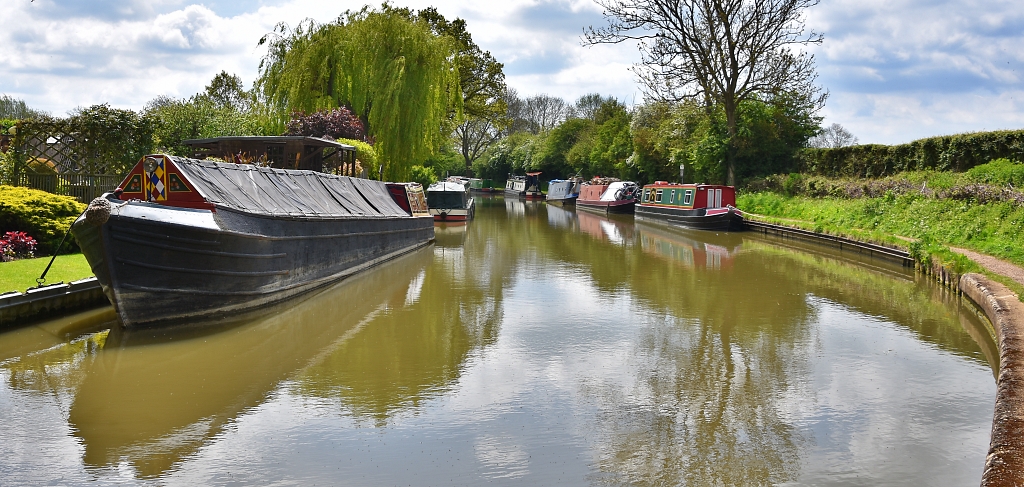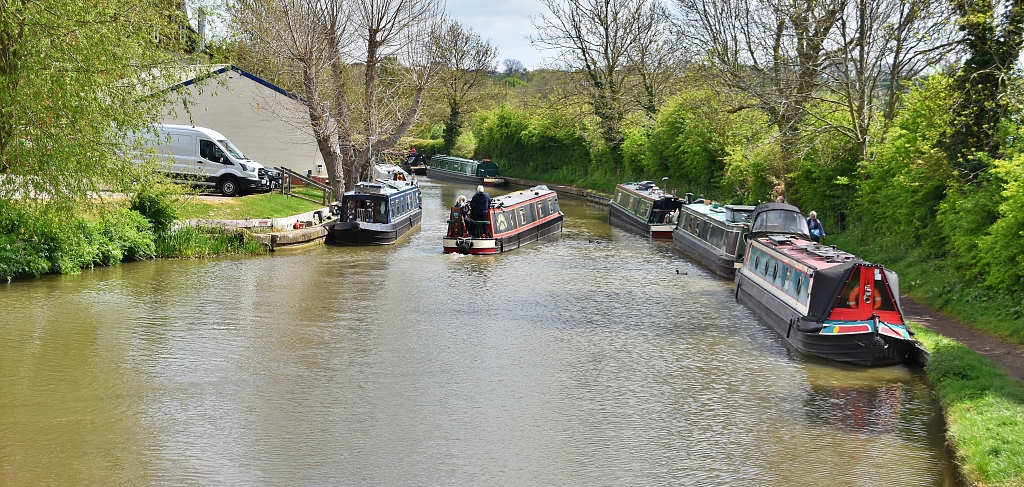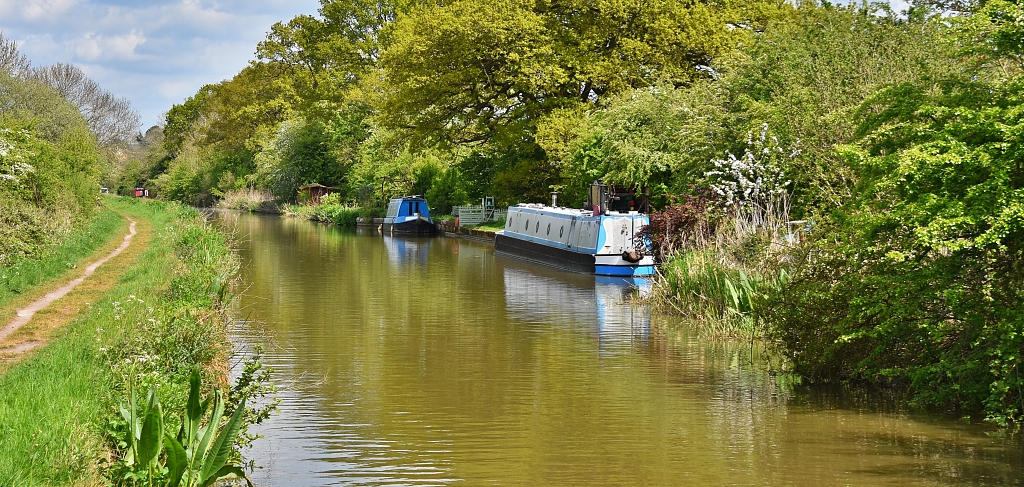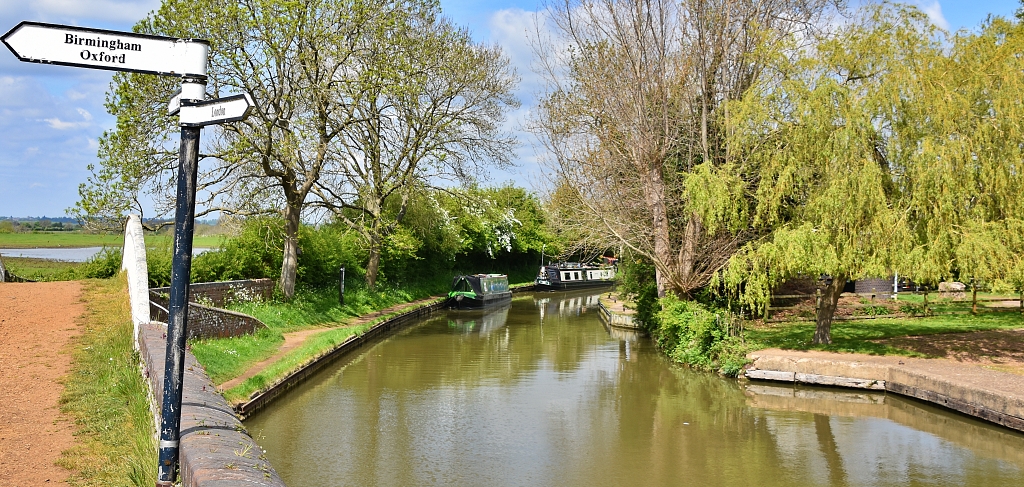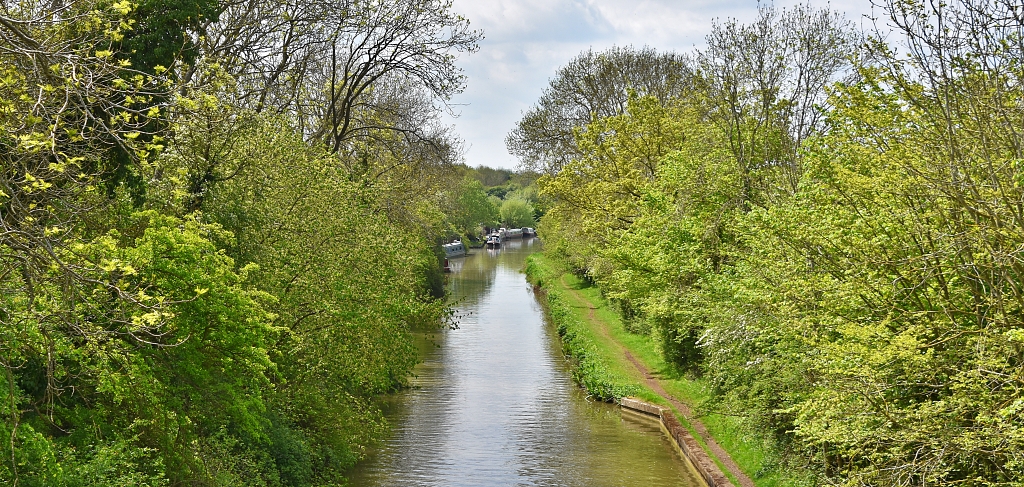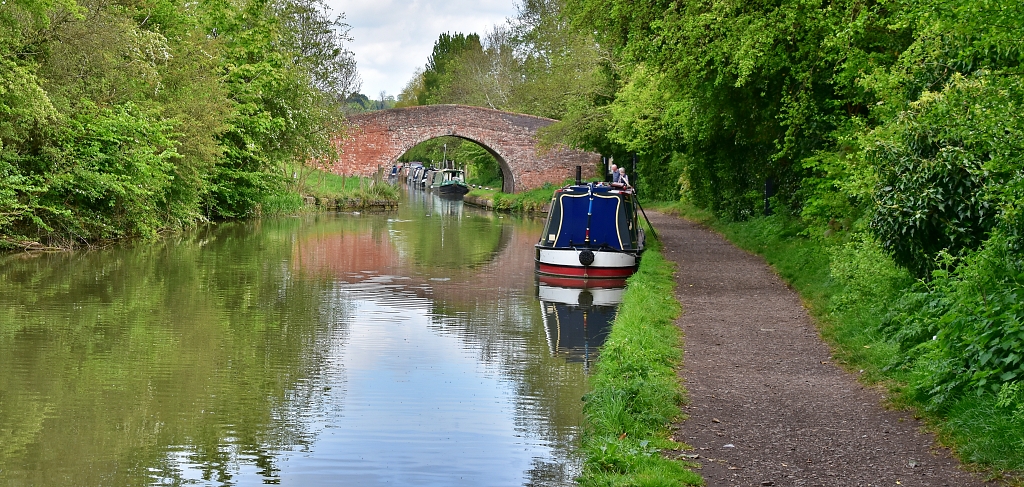Netherton Tunnel Canal Walk
Pepper Pot Spotting and a Long Dark Tunnel
There are more
than two thousand miles of navigable canals in England and Wales, most of which have towpaths for walking and cycling. And with the Grand Union Canal only a few miles away from our Northamptonshire home, we started to find
a great deal of pleasure in walks that included stretches of canal. The landscape is varied and we've happily strolled through open quiet
countryside, noisy cuttings with main line railways and motorways fighting for
the flattest routes, and through major towns. There’s wildlife to spot,
historical sites, imaginative engineering, and of course, the brightly coloured
narrowboats. The more time we spent walking along the canals, the greater our
interest and need to learn, understand, and explore. Which is why we planned the exciting Netherton Tunnel canal walk in the heart of
The Black Country in the West Midlands.
The most local canal tunnels to us are Blisworth and Braunston and neither one has a towpath running through them. So, when I found that it's possible to walk through the Netherton Tunnel on the Netherton Tunnel Branch between Dudley No. 2 Canal and the Birmingham New Mainline Canal it was a no brainer. Then my excitement rose when I saw that the tunnel was about 1.7 miles in length!
As I started
to plan the walk, I found details of a Pepper Pot Trail which traced some of
the tunnel venting shafts, known locally as pepper pots due to their shape. I stitched
these curios together, added an extra loop along the canals to view some aqueducts
and locks and - hey presto! - the Netherton Tunnel canal walk was born.
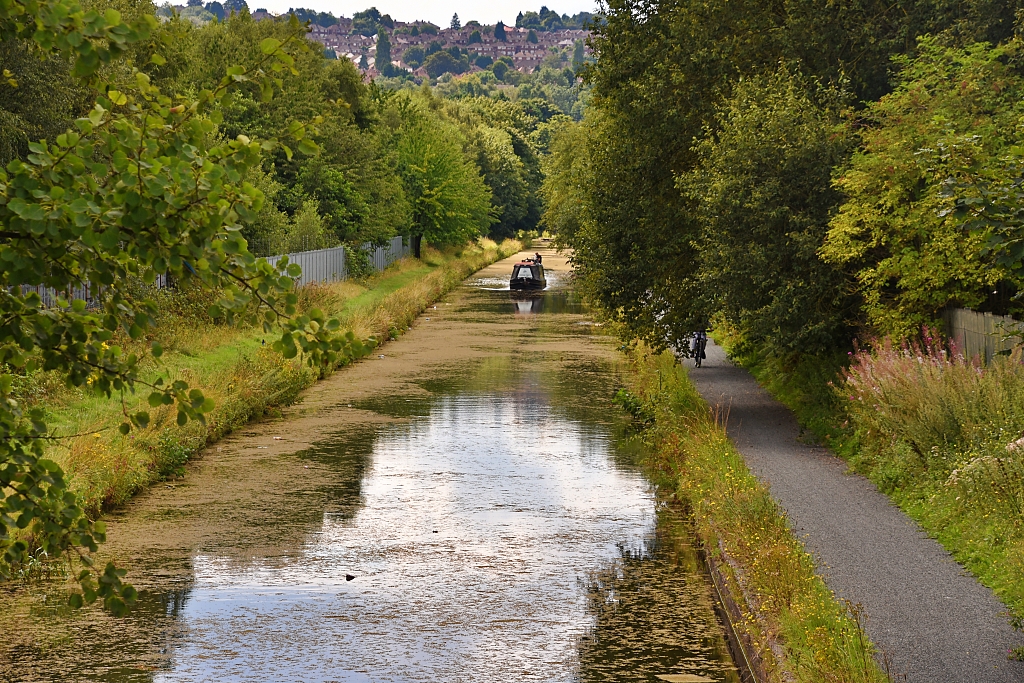 Looking Back Along the Netherton Tunnel Branch Canal © essentially-england.com
Looking Back Along the Netherton Tunnel Branch Canal © essentially-england.com
The Building of the Netherton Tunnel
In the mid 1800’s, congestion at the narrow Dudley Tunnel limited travel between the Dudley and Birmingham canal networks. The construction of the Netherton Tunnel branch was approved in 1855 and on the 31st December, the 1st Earl of Dudley, William Ward, cut the start of the first hole in front of a large group of gentry and ironmasters.
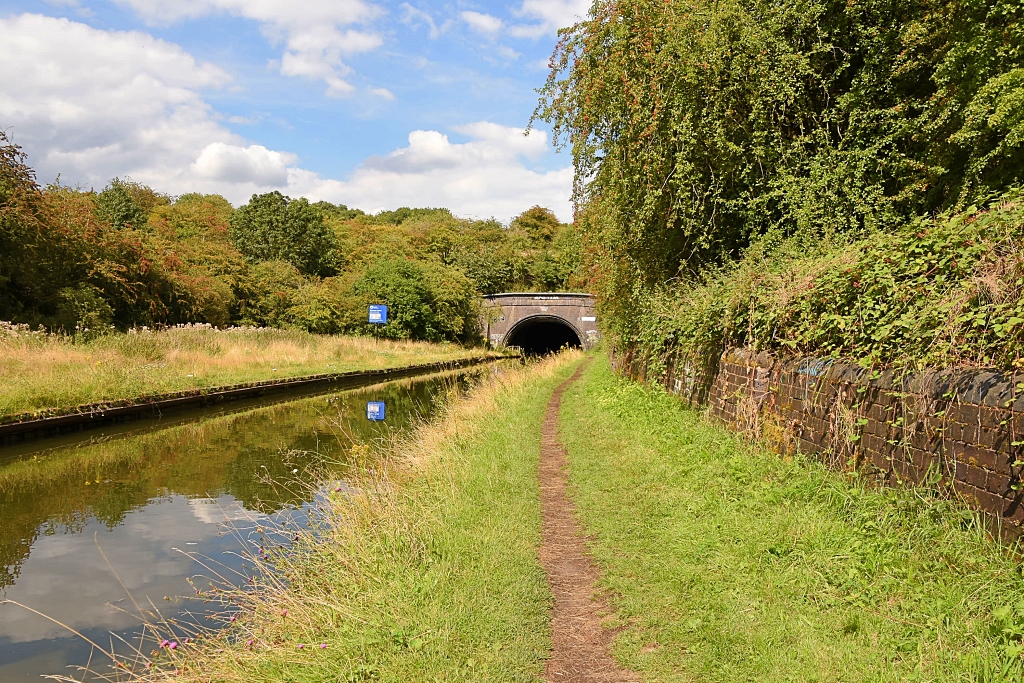 The South Portal of Netherton Tunnel
The South Portal of Netherton Tunnel © essentially-england.com
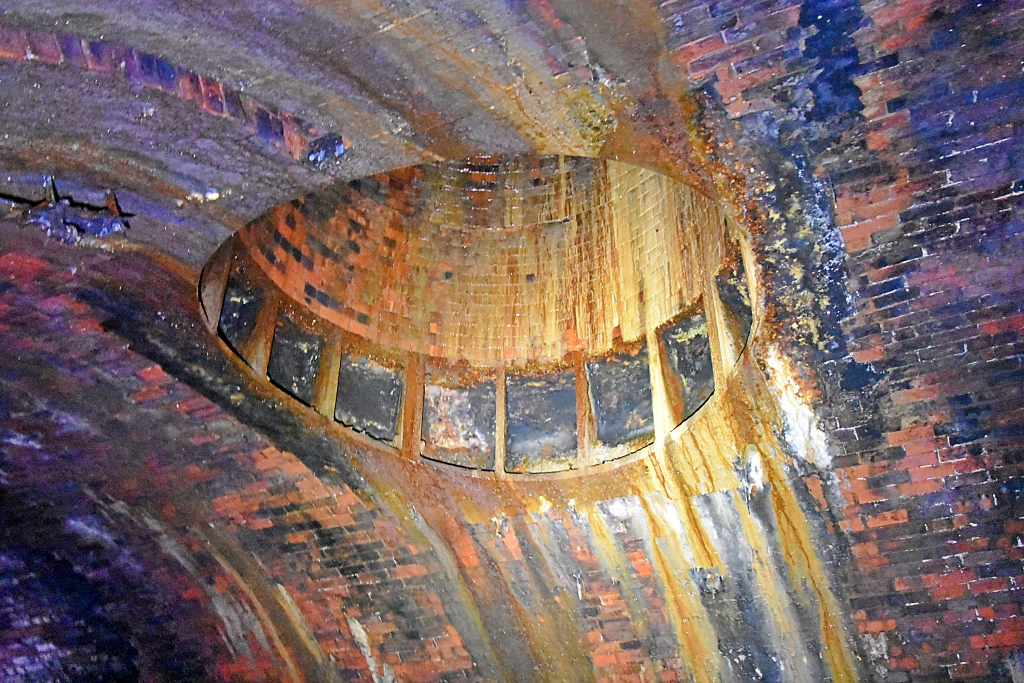 Netherton Tunnel Vent Shaft
Netherton Tunnel Vent Shaft © essentially-england.com
The tunnel was built by digging seventeen shafts - between 65 and 345 foot deep - down to the canal level. Then cuttings were dug to link the shafts along the tunnel route through the Rowley Hills. Over half a million tonnes of material was removed and most of this was lifted through the shafts.
Once the tunnel had been dug, eight of the shafts were strengthened and lined with brick to provide ventilation to the tunnel. The other nine shafts were filled in. Over 27 million bricks were used in the construction of the tunnel and 53,000 cubic yards of puddling clay used to seal the base of the canal. The tunnel was opened on the 20th August 1858 and was the last and widest tunnel to be constructed on the English canal system. What a feat of Victorian engineering!
Netherton Tunnel Canal Walk Map
Hopefully, the introduction has whetted your appetite for this exiting figure of eight(ish) canal walk. There is a lot to discover and then there is the thrill of walking through the tunnel!
The walk is 9.1 miles long, but can easily be shortened by not walking around the canal loop of 3.8 miles. Just following the pepper pots and walking through the tunnel would cut the distance down to about 5.3 miles.
The start point is the Warrens Hall Local Nature Reserve near Dudley where there is a free car park off the B4171. If using SatNav use the postcode B65 8QE for guidance.
The walk directions are quite complicated to start with so it may be easier to follow the route using some mapping software. If you use Komoot.com mapping, then you can follow my route on your phone. If you use a GPS device, then click on “Discover more info about this tour” to download the gpx file.
Before setting off on our Netherton Tunnel canal walk, please make sure you have a very good torch and sturdy shoes.
The tunnel is pitch black and the towpath is very uneven. There were many puddles to walk around and some sections where you could not avoid walking through water a couple of inches deep. I’m not sure if a phone torch would be bright enough because I used a powerful LED light from my bike.
Netherton Tunnel Canal Walking Route
From the car park we walked towards the information board next to a metal gate. On our right, next to a concrete barrier we took a narrow gravel path into the trees. Not far along this track, we found the first (called No. 2) of the six pepper pots on this route hidden in the trees on our right-hand side.
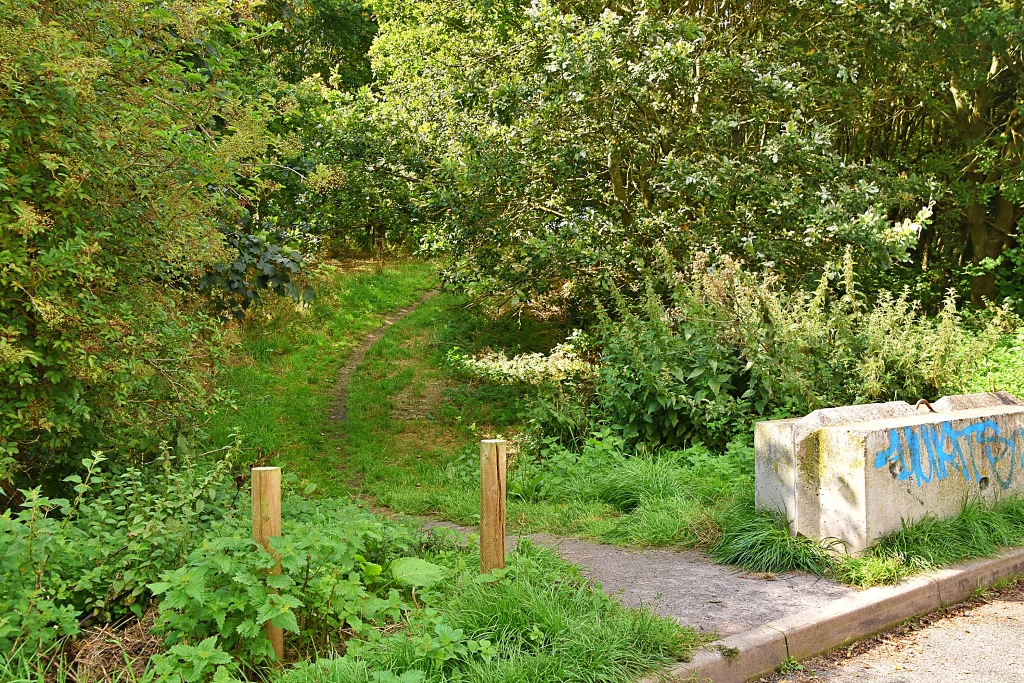 Footpath Leaving the Car Park © essentially-england.com
Footpath Leaving the Car Park © essentially-england.com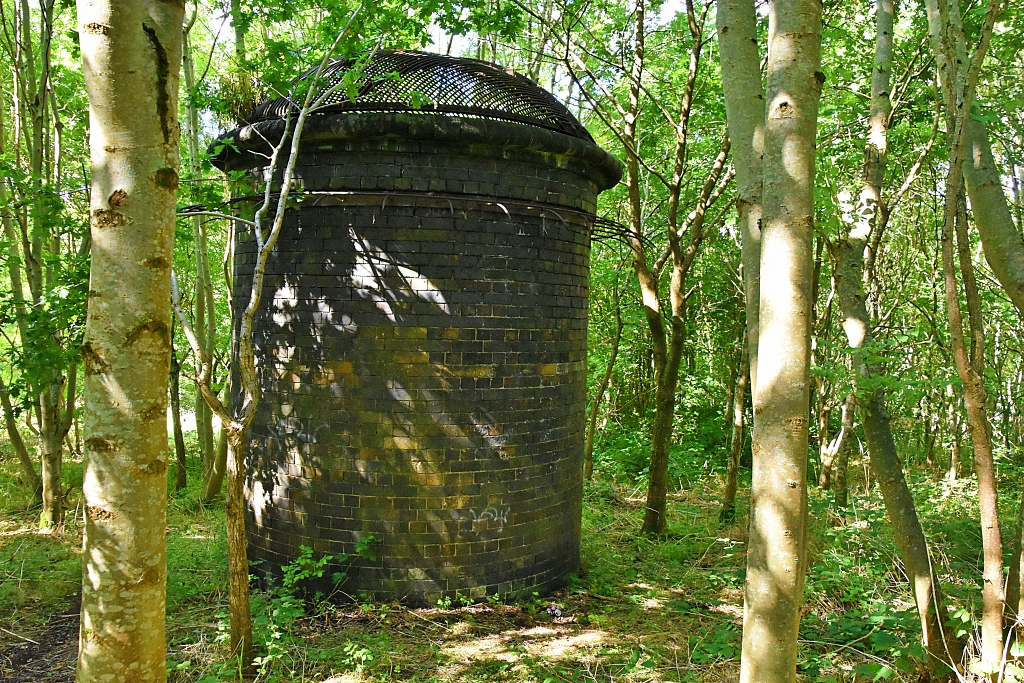 Netherton Tunnel Pepper Pot No.2 © essentially-england.com
Netherton Tunnel Pepper Pot No.2 © essentially-england.comWe continued following this path to Banklands Road where we turned right to shortly join New Rowley Road and then left looking for a footpath sign on the right-hand side of the road.
Crossing the road, we joined a tarmac path through woodland until a gravel track on the left-hand side. We took the track to the left passing between trees and bramble bushes to firstly a fishing lake on our right-hand side and then the second of our pepper pots,(No. 4), hidden on the left in grass and trees a little further on.
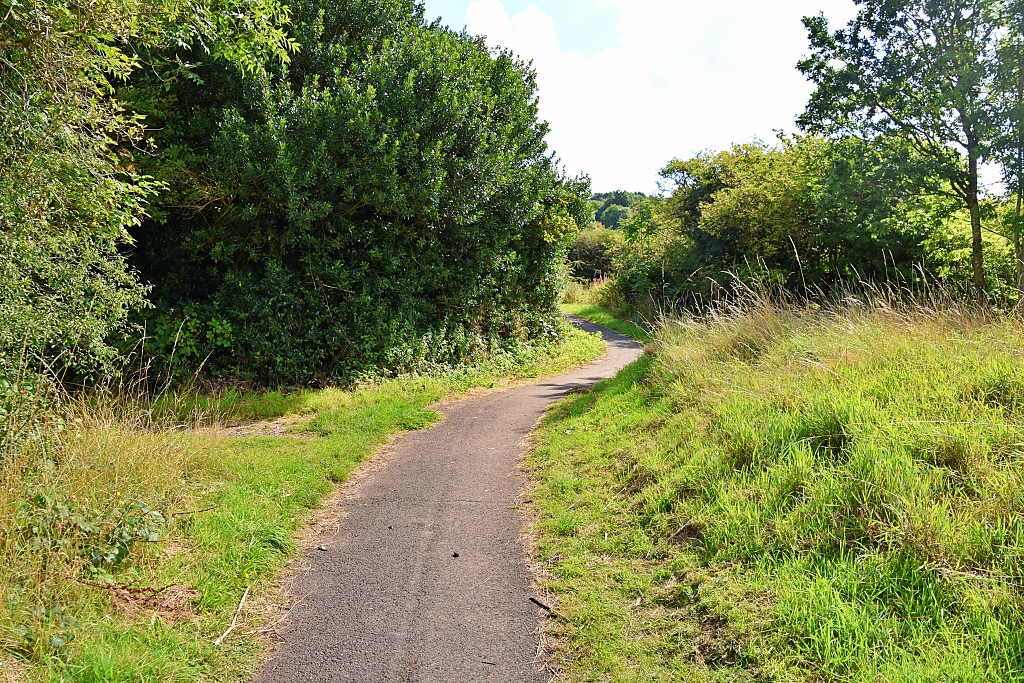 Left Turn to Pepper Pot No. 4 © essentially-england.com
Left Turn to Pepper Pot No. 4 © essentially-england.com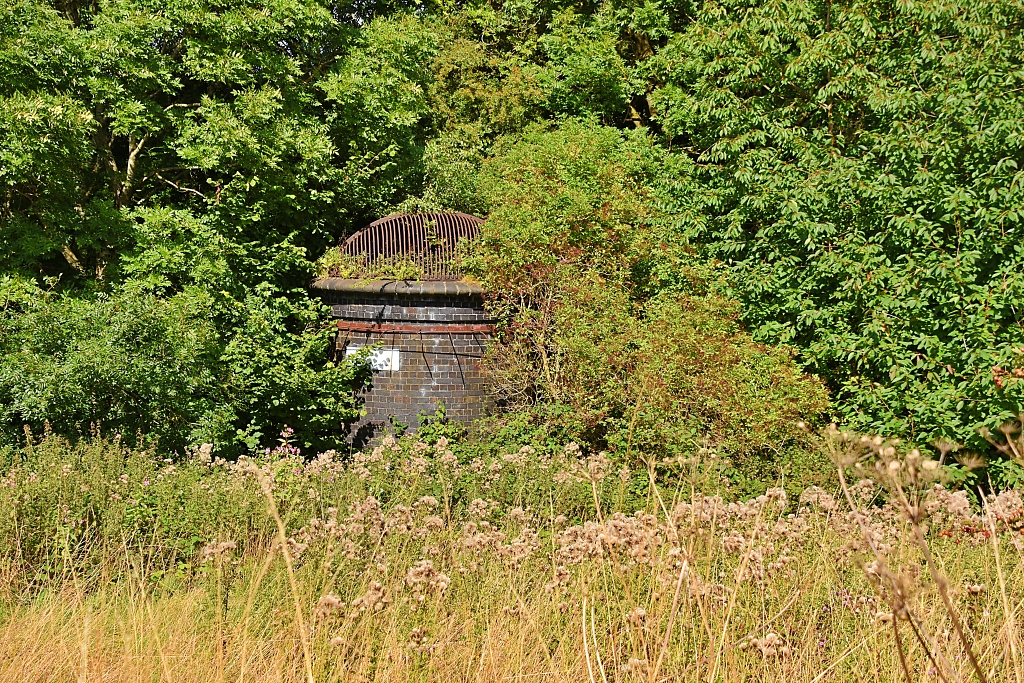 Netherton Tunnel Pepper Pot No.4 © essentially-england.com
Netherton Tunnel Pepper Pot No.4 © essentially-england.comWe retraced our steps to the junction and turned left to rejoin the tarmac path. The path wound its way through trees and then along a field boundary to skirt round Warrens Hall Riding School. Here the path merges onto the road and we continued ahead until the first right hand turn which took us up past Warren Hall Care Home to Oakham Road.
The walk becomes suburban now and turning left we followed Oakham Road until its junction with Regent Road where we turned right. We continued down the twists and turns of Regent Road onto Regent Street until we found the next pepper pot (No 10) on our right-hand side between two houses.
 View from Regent Road © essentially-england.com
View from Regent Road © essentially-england.com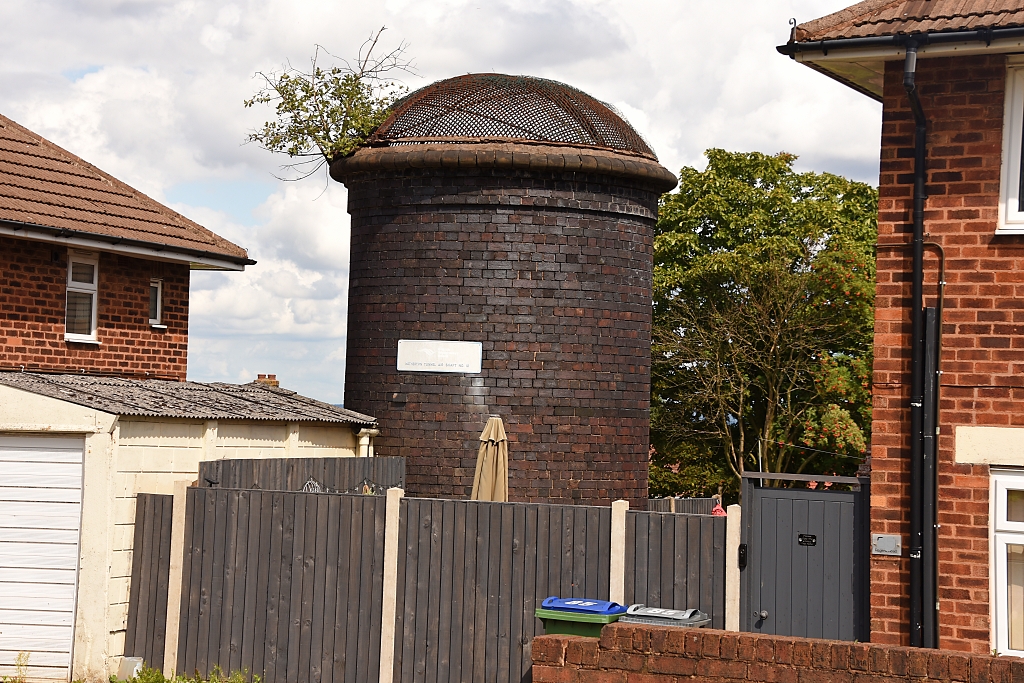 Netherton Tunnel Pepper Pot No.10 © essentially-england.com
Netherton Tunnel Pepper Pot No.10 © essentially-england.comWe carried on down Regent Street past Tividale Hall Primary School on our left to turn right on to Aston Road. The next pepper pot air vent is right in front of us acting as a roundabout. It is the only shaft that has been rebuilt.
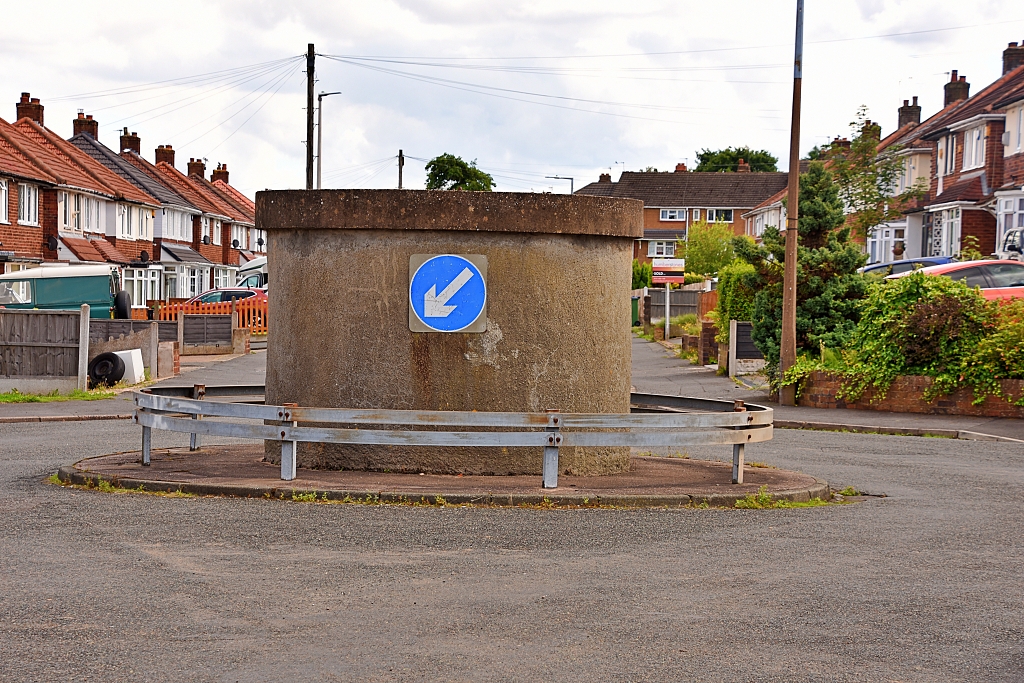 Aston Road Netherton Tunnel Pepper Pot © essentially-england.com
Aston Road Netherton Tunnel Pepper Pot © essentially-england.comOur route took us past the Aston Road pepper pot to the junction with Pine Road where we turned left to the crossroads with Elm Terrace. We went straight across down Birch Crescent to take the next left turn on to Packwood Road. At the T-junction we found the next pepper pot just to our left in front of the houses.
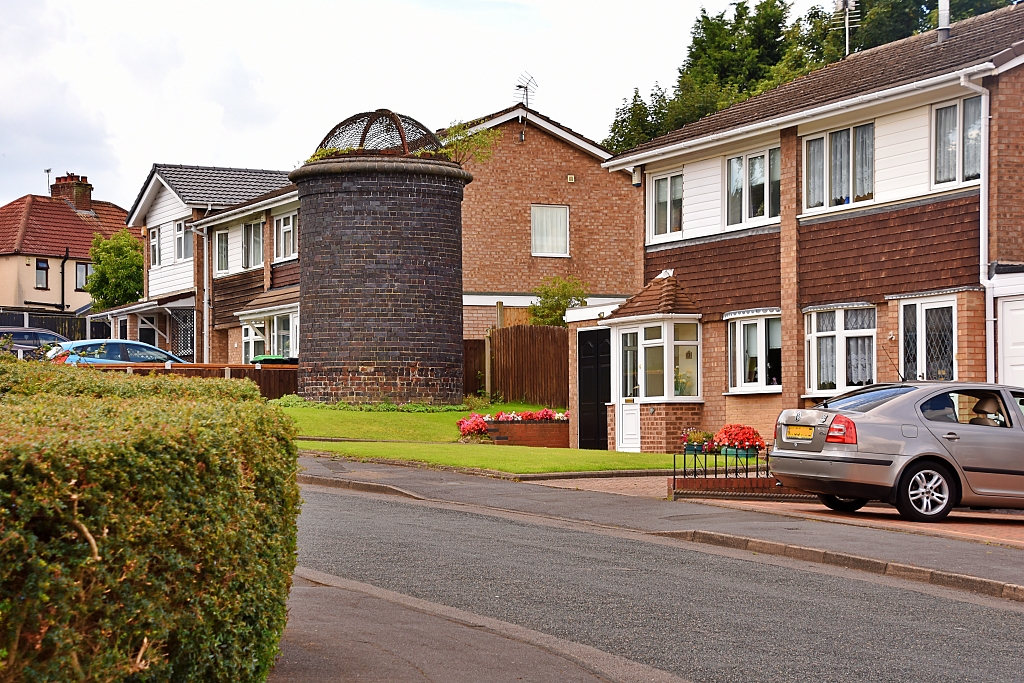 Packwood Road Netherton Tunnel Pepper Pot © essentially-england.com
Packwood Road Netherton Tunnel Pepper Pot © essentially-england.comTurning right at the T-junction we descended Packwood Road until it turned sharp right, and we veered left onto a footpath that ran between the houses to New Birmingham Road. We carefully crossed this busy dual carriage way and went right alongside Tividale Park looking for the entrance.
Turning into the park, we kept left at the first fork in the path and walked towards a fenced off sports area. On our left was a car park and beyond a grass playing field with an embankment on the left. We climbed the embankment and walked alongside a football pitch to the last pepper pot air vent (No. 16) of our Netherton Tunnel canal walk.
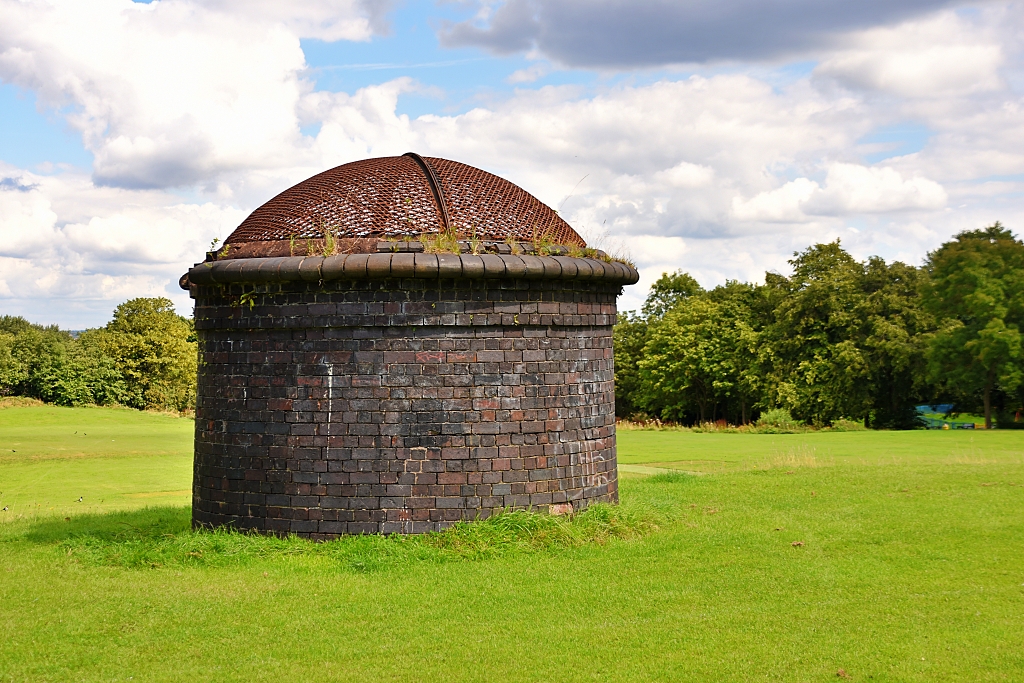 Netherton Tunnel Pepper Pot No.16 in Tividale Park © essentially-england.com
Netherton Tunnel Pepper Pot No.16 in Tividale Park © essentially-england.comWe returned to the path and turned left to descend to a junction where we went right and beside the sports area. At the next junction of paths, we continued straight over and round to the left to drop down to the Dudley Road park entrance. Leaving the park, we turned right and shortly left on to Britannia Street. The road passed through a small industrial estate where we dropped down to get our first view of a canal.
 Joining the Birmingham Old Mainline Canal © essentially-england.com
Joining the Birmingham Old Mainline Canal © essentially-england.comCrossing the small bridge, we turned left on to the gravel towpath making sure we avoided all the sunbathing ducks. It wasn’t long until we reached the Tividale Aqueduct and decision time. This is the point where we could turn left and go to the tunnel for the shorter walk or turn right and take the extra canal loop and return to this point. After admiring the engineering achievement and fine views of one canal crossing another our choice was made and it was the longer route for us!
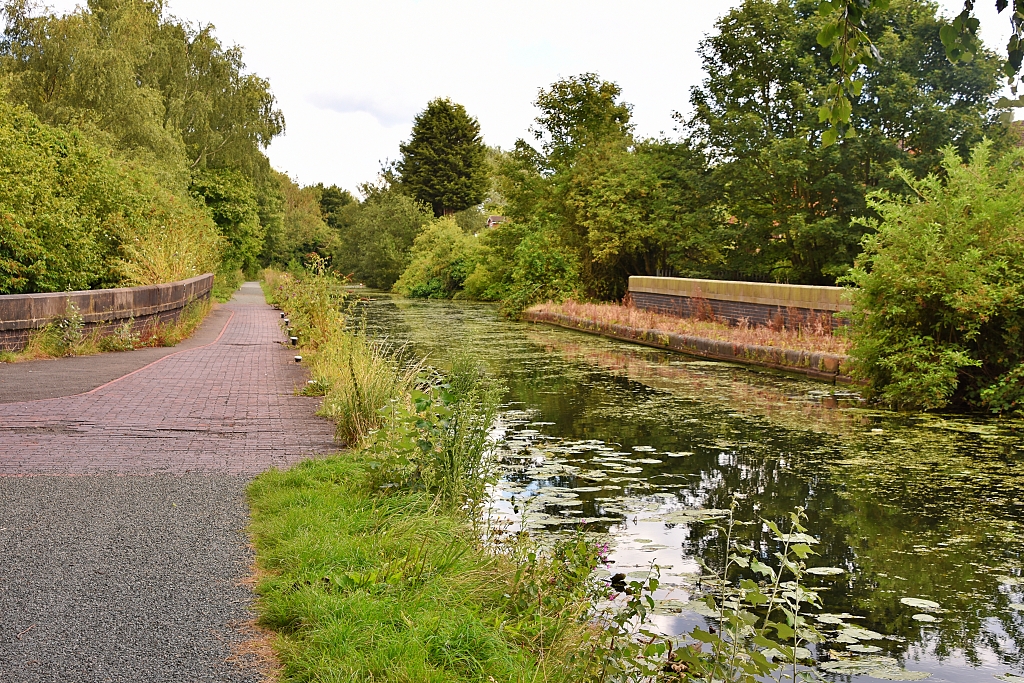 Tividale Aqueduct Crossing the Netherton Tunnel Branch Canal
Tividale Aqueduct Crossing the Netherton Tunnel Branch Canal © essentially-england.com
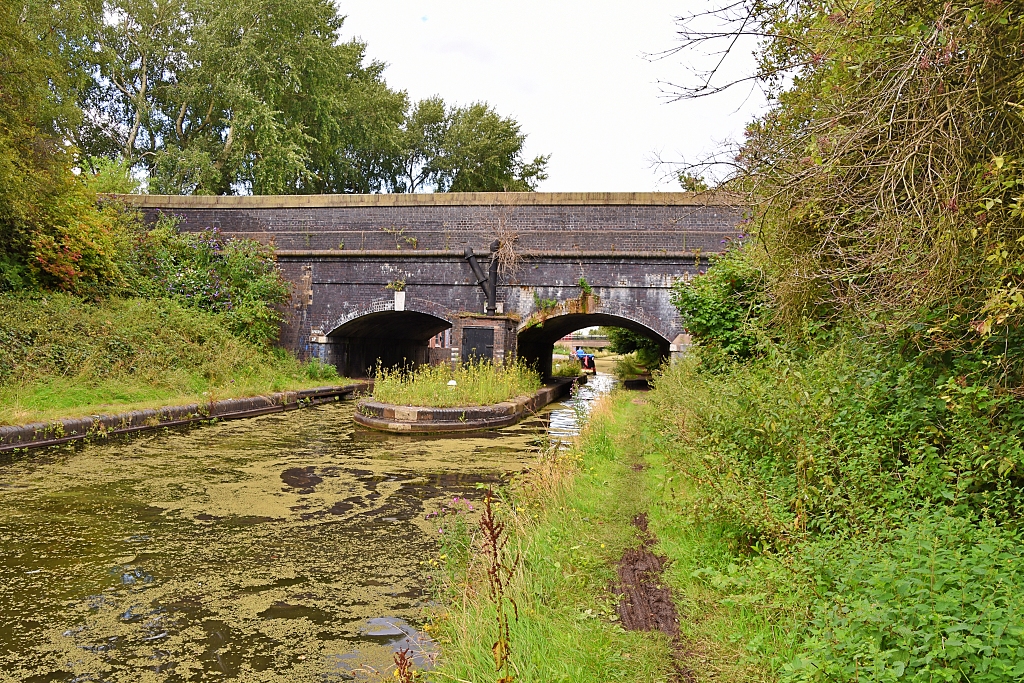 Netherton Tunnel Branch Canal Below the Tividale Aqueduct
Netherton Tunnel Branch Canal Below the Tividale Aqueduct © essentially-england.com
Without crossing the aqueduct, we took the steps down to the Netherton Tunnel Branch canal and walked along the grass towpath. It was quite industrial along here with lots of clanging and banging giving us the sense that we had stepped back in time to the heyday of the Industrial Revolution.
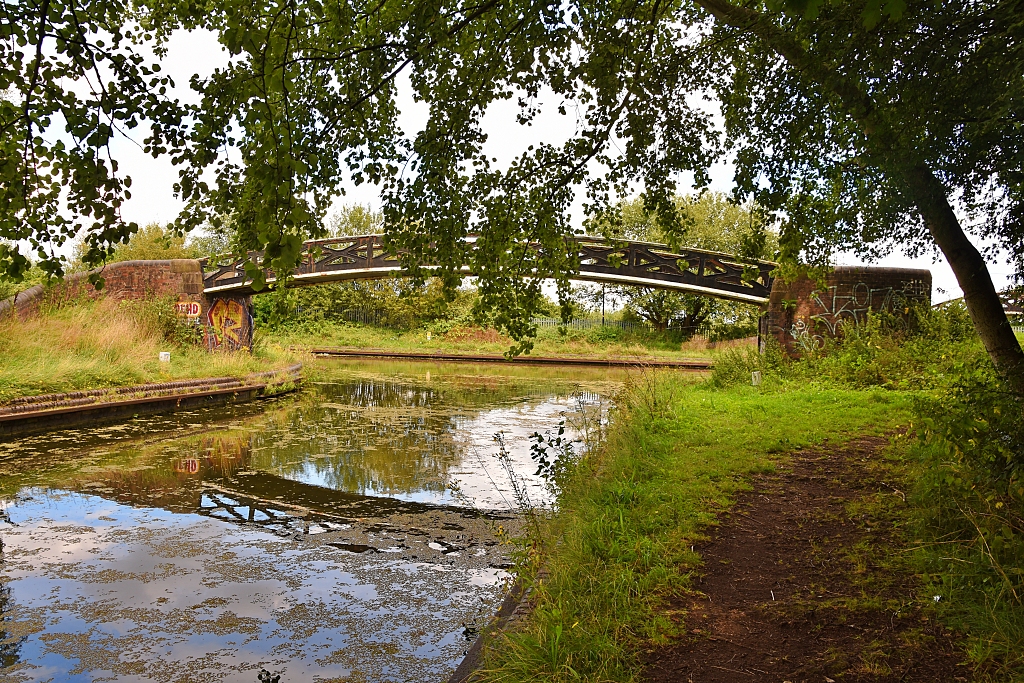 Netherton Tunnel Branch Canal Junction with Birmingham New Mainline Canal © essentially-england.com
Netherton Tunnel Branch Canal Junction with Birmingham New Mainline Canal © essentially-england.comAt the canal junction, we took the first bridge to cross the canal we had just walked along and join the Birmingham New Mainline canal. The walking was pretty straightforward with the canal on our right-hand side. At times it was noisy, other times peaceful and quiet, and it appeared popular with the local fishing community. We crossed a couple of aqueducts on the way and eventually made our way to the Factory Locks.
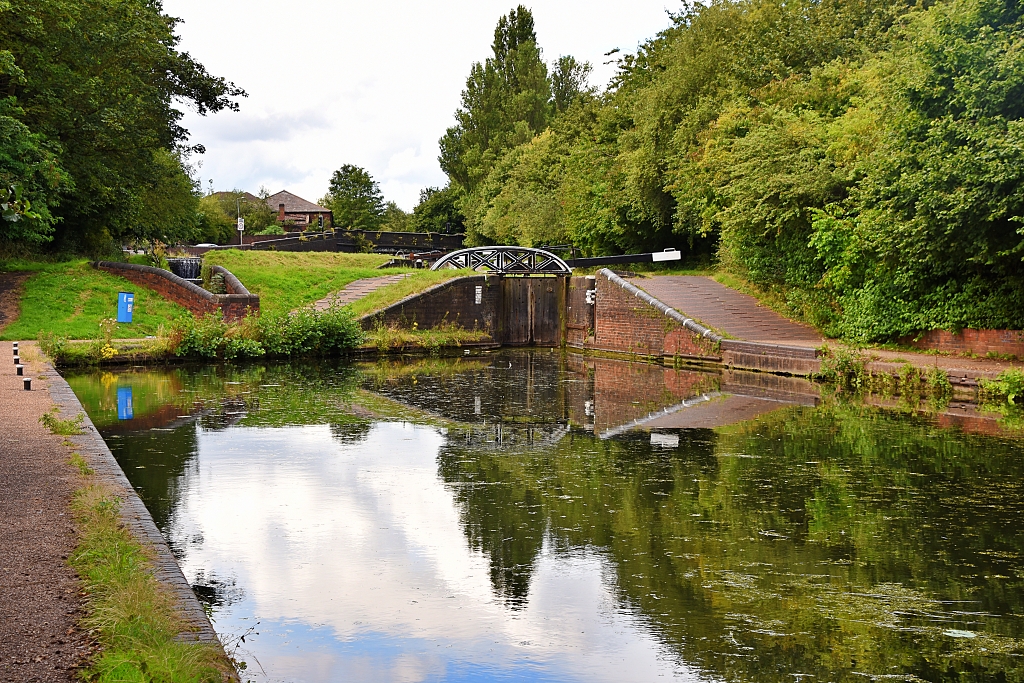 The Factory Locks on the Birmingham New Mainline Canal © essentially-england.com
The Factory Locks on the Birmingham New Mainline Canal © essentially-england.comWe veered right and crossed the canal using the small metal bridge right next to the first lock gate. The locks seemed very narrow and the height difference large. After passing three locks, we used the Factory Junction canal bridge to join the Birmingham Old Mainline canal.
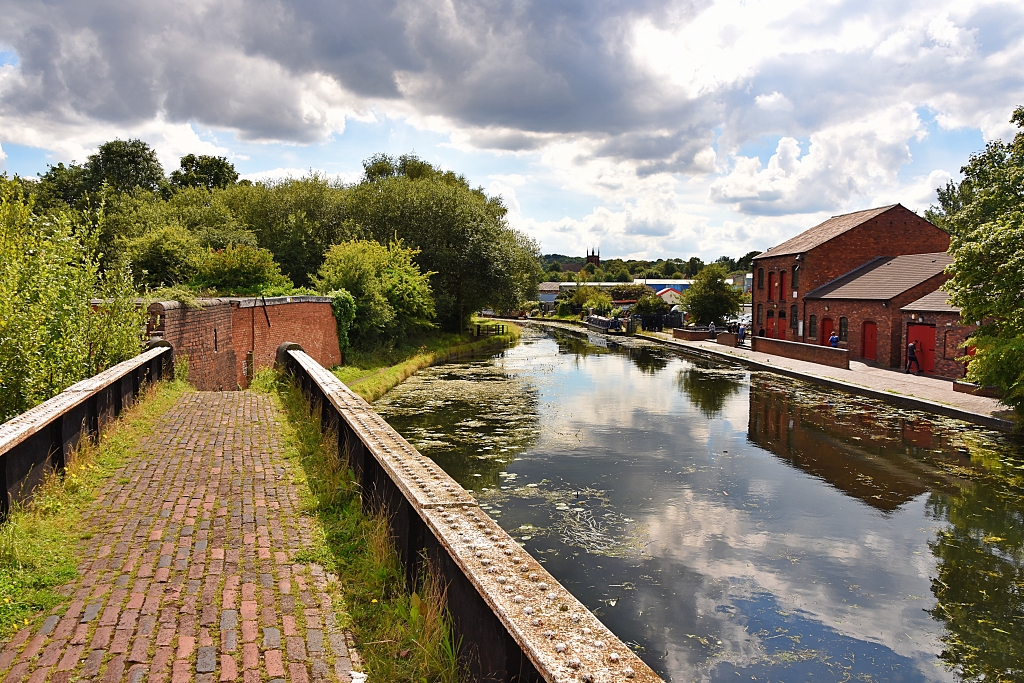 The View from Factory Junction Bridge Along the Birmingham Old Mainline Canal © essentially-england.com
The View from Factory Junction Bridge Along the Birmingham Old Mainline Canal © essentially-england.comThe canal meandered through industrial areas and housing estates. At the Dudley Junction, the Dudley Canal No.1 went off to the right and soon after there were stretches of over hanging trees where we hopeful of sighting a Kingfisher feeding. It turned out not to be today!
And before we knew it, we were back at the Tividale Aqueduct. We descended the steps for the second time, and this time we were going to turn left at the bottom. I suppose, as it was such a nice day, we could have done another lap, but the excitement of walking through the tunnel was building!
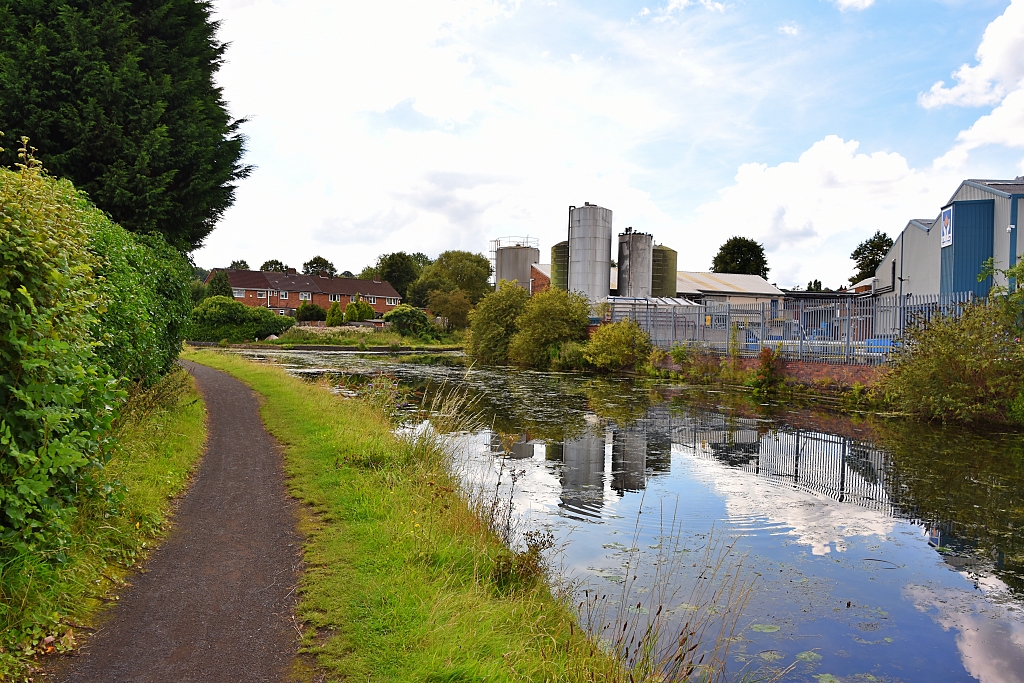 Looking Towards Dudley Junction
Looking Towards Dudley Junction © essentially-england.com
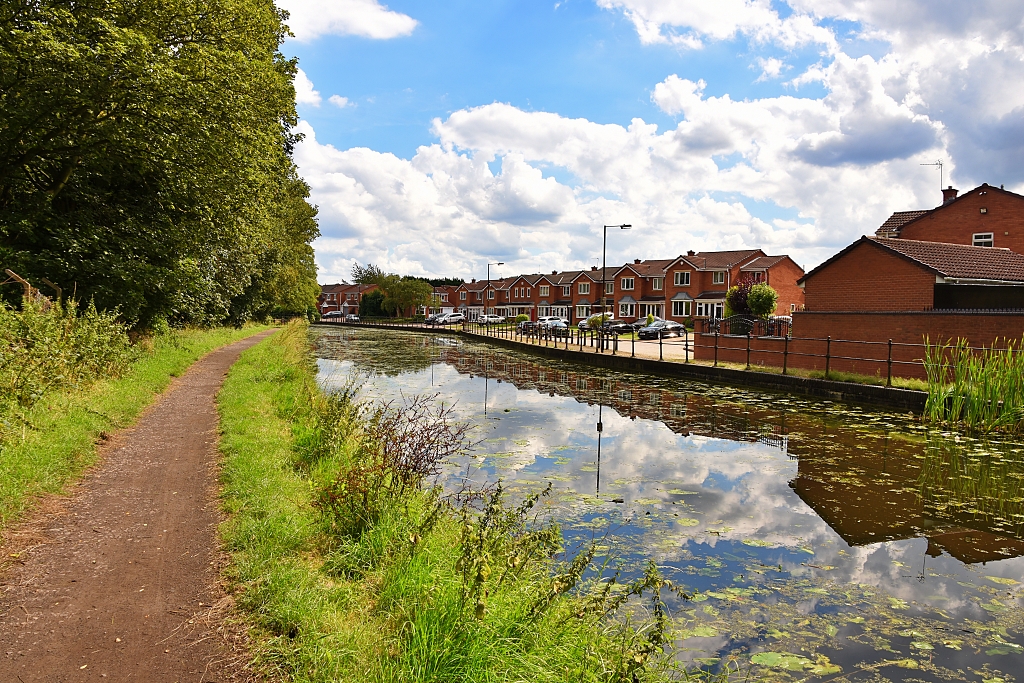 Reflections Along Birmingham Old Mainline Canal
Reflections Along Birmingham Old Mainline Canal © essentially-england.com
And finally, we got to the part of the walk we had been waiting for all day. The Netherton Tunnel entrance was about 200 metres away from the aqueduct. The torch came out of the rucksack and the camera was set to work in darkness. Looking over at the other side of the canal it looked like the towpath was closed.
With trepidation we stepped into the tunnel and within tens of metres were enclosed in darkness.
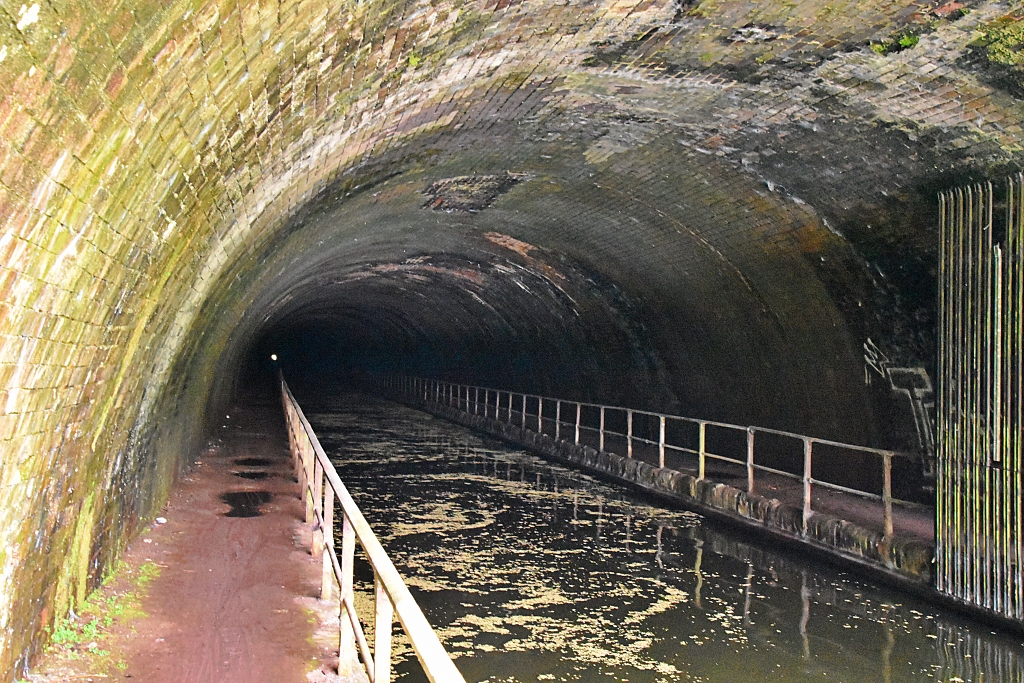 Entering the Netherton Tunnel © essentially-england.com
Entering the Netherton Tunnel © essentially-england.comThank goodness we were well prepared with a good torch as the towpath was very uneven in places and there were lots of puddles. There’s no way we could have walked through the tunnel without a light. In fact, it was quite eerie on the occasions we stopped and turned off the torch. Just imagine how the working conditions were for the poor men digging the tunnel. It must have been awful.
At times it was quiet and other times when we could just hear water dripping. At one point it was very worrying when we could hear running water gushing somewhere in front of us, but outside of the torch light. We soon found the path covered by several inches of water which was pouring down into the canal. There was nothing for it, but to carry on and get wet feet!
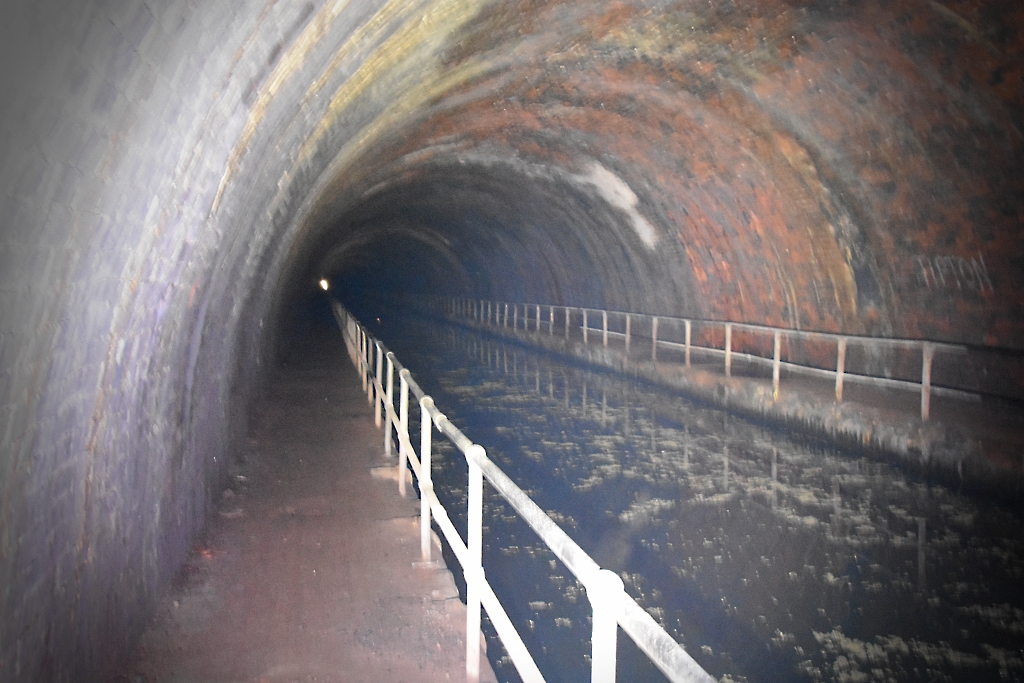 The Highlight of our Netherton Tunnel Canal Walk - Inside the Netherton Tunnel © essentially-england.com
The Highlight of our Netherton Tunnel Canal Walk - Inside the Netherton Tunnel © essentially-england.comThat pinprick of brightness that we could see as we first entered the tunnel took its time getting to us. In fact, it took us forty minutes to walk through the tunnel!
As it was, we had the tunnel to ourselves, not a single boat or other walkers followed or passed us. And as I found out when I got home, my camera struggled to get a decent photo. Looks like we may have to go back for another go, but this time take the tripod!
With all the excitement over - and wet feet - we continued around 200 metres along the canal to reach a set of steps on our left just in front of a bridge. We climbed the steps into Warren’s Hall Local Nature Reserve and were immediately in front of Cobb’s Engine House and Chimney. The Grade II listed engine was built around 1830 and housed a stationary steam pump to pump water from the local mines. It would remove 1.6 million litres of water per day from the mines and pump it into the canal.
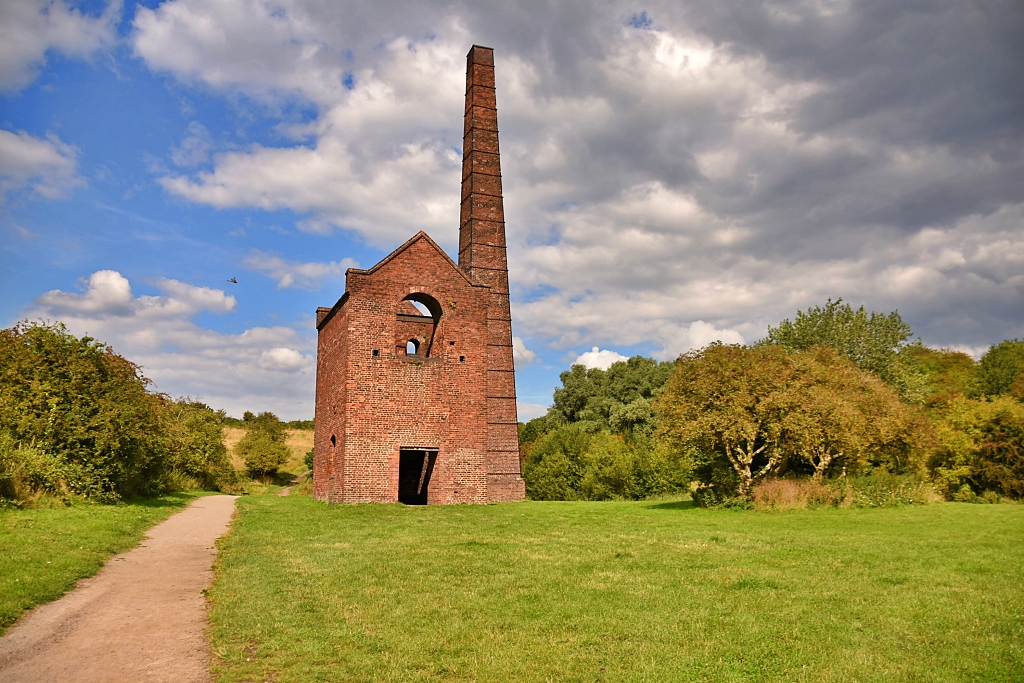 Cobb's Engine House and Chimney © essentially-england.com
Cobb's Engine House and Chimney © essentially-england.comWe followed the footpath past the engine house, secret pool, and the Top Pool to return to our starting point.
What a fantastic walk our Netherton Tunnel canal walk made! There was so much interest from top to bottom and wonderful canal views. This really is a good walk if you enjoy our industrial heritage with the addition of it being a great adventure too!
Other local attractions include The Black Country Museum, Dudley Castle and Zoo, Priory Park, and Cadbury World and Bournville village. And if you fancy exploring the canal network on a narrowboat why not try one of the boat trips from Dudley Canal and Caverns.
Fancy A Narrowboat Holiday Along A Canal?
Have our canal photos given you ideas about a narrowboat holiday or short break on the water?
The canal system in England and Wales is over two thousand miles long. There are plenty of different routes and circuits you could choose from, from cityscapes to quiet villages, or remote countryside. You can decide between an adventurous trip with locks and tunnels or a nice and easy float along a canal with no hassles. Below are some ideas...
Glyndwr
Cambridge
Sleeps 6
Narrow Escape
Tring
Sleeps 4
The Jubilee
Loghborough
Sleeps 4
We understand that not everyone wants to go racing off down the canals, but may still want to experience the canal boat lifestyle. So here are some narrowboats that are permanently moored.
